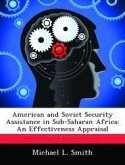This thesis aims to identify lessons learned for future Security Force Assistance efforts by studying America's advisory mission in South Korea. After the invasion of South Korea by North Korea on 25 June 1950, the Republic of Korea (R.O.K.) Army lay shattered and dispersed across South Korea. Embedded Korean Military Advisory Group (KMAG) advisors salvaged remnants of the R.O.K. Army from total defeat and from 1950-1953 KMAG worked diligently to recruit, train, and equip a twenty-division army comprising 576,000 personnel capable of modern combined arms warfare. South Korea served as the United States' first large scale advisory mission and may provide lessons learned for future Security Force Assistance efforts. Fifty years after the Korean War, America finds itself in another large-scale Security Force Assistance mission in Iraq. The insights gained from comparing KMAG and the Iraq advisory mission may provide the current force a better appreciation of the intricacies involved with advising foreign forces in the future. This work has been selected by scholars as being culturally important, and is part of the knowledge base of civilization as we know it. This work was reproduced from the original artifact, and remains as true to the original work as possible. Therefore, you will see the original copyright references, library stamps (as most of these works have been housed in our most important libraries around the world), and other notations in the work. This work is in the public domain in the United States of America, and possibly other nations. Within the United States, you may freely copy and distribute this work, as no entity (individual or corporate) has a copyright on the body of the work. As a reproduction of a historical artifact, this work may contain missing or blurred pages, poor pictures, errant marks, etc. Scholars believe, and we concur, that this work is important enough to be preserved, reproduced, and made generally available to the public. We appreciate your support of the preservation process, and thank you for being an important part of keeping this knowledge alive and relevant.
Bitte wählen Sie Ihr Anliegen aus.
Rechnungen
Retourenschein anfordern
Bestellstatus
Storno




![A Comprehensive Approach to Improving U.S. Security Force Assistance Efforts [Enlarged Edition] A Comprehensive Approach to Improving U.S. Security Force Assistance Efforts [Enlarged Edition]](https://bilder.buecher.de/produkte/40/40580/40580317m.jpg)



